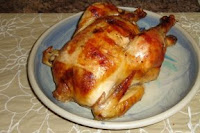This morning, I awoke early. Shortly after 4 a.m., I absorbed the quiet of the early morning accompanied by the beautiful song of birds, and the beauty of a crescent moon shining brilliantly in a clear sky. How wonderful.
I did, also, go back to sleep. How glad I am, however, for that early morning awakening and time.
Yesterday, I finished reading An Unquiet Mind by Kay Redfield Jamison, subtitled A Memoir of Moods and Madness. (For people in the Kingston area, it is available at the local library, KFPL). This is a book I highly recommend. She wrote this book so truly well. It was an absolute delight to read. I offer her my deep respect for her courage, genuineness, and tenacity. This book is at least partially about manic-depressive illness, her life and experiences of it, as well as her work as a clinician and researcher and her journey of reconciling and navigating both. I have in mind here a picture of a venn diagram where there are two circles and they partially overlap in the center. Do you remember those? Perhaps because of my own work as a therapist and my status as firmly also a human being subject to all that that may entail, I reflect on the overlapping part often enough--the place where we are (and hold) our whole self, all of us, with all of our different identities, experiences, roles and parts.
Kay has considered at length the question of whether she should work as a clinician given she has a mental illness. She puts forth the firm tenet that work as a clinician must be for and about assisting clients and patients: "Doctors, as my chairman is fond of pointing out, are there to treat patients: patients should never have to pay--either literally or medically--for the problems and sufferings of their doctors" (p. 209-210). I also agree. Kay has worked very hard to make sure she succeeds in this. As she writes she has been careful and been fortunate. She has sought out much support and put many safeguards in place. She is also now a world expert in her field and someone who has contributed enormously to assisting people with mood disorders and especially manic-depression. Additionally, she is an advocate of psychotherapy including clinicians participating in this. I say, kudos to her. She was refreshingly real, and her book, reflections, and disclosures intelligent, thoughtful, moving, funny, poignant, and, once again, courageous.
***
A quick glance at some of the comments people have made on amazon.ca leads me to add one caveat. I also agree that Kay has been fortunate in the support she has had around her (family, colleagues etc), the professional support she has been able to access, the sabbaticals she was able to take, as well as the financial security and stability her particular jobs offered her. This occurred to me also while reading. I do not begrudge her or think her less courageous but I do wish to acknowledge how isolated many people can be, including people with this illness, and how difficult it can be for them to access resources, assistance, and support. If you are one of those people, I wish to say, I am truly sorry it is so terribly hard. I offer you my encouragement and my deep hope that you will find a way to persevere in life one small step at a time, and that grace will enter in all the ways it can--whether from a sunrise that is glorious and pulls one into life, or a meal (or meals) provided by another, or a helpful helping professional that you meet, a job that you like and can manage, the balm of friendship, or from all other manner of helpful things. I am thinking of you.








